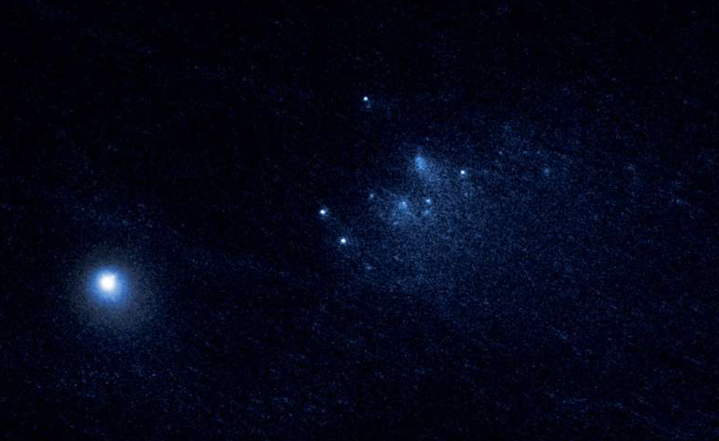
Earlier this year, we bore witness to the destruction of a 4.5-billion-year-old comet. Or at least, NASA’s Hubble Space Telescope bore witness, and we benefited from its footage.
In what is being heralded as “one of the sharpest, most detailed observations of a comet breaking apart,” Hubble took a series of images across three days in January when “25 building-size blocks made of a mixture of ice and dust” began drifting away from its parent comet, named 332P/Ikeya-Murakami. The debris created a trail around 3,000 miles long behind the comet and made for some spectacular photographs, even from 67 million miles away.
But beyond making for an impressive sight, scientists note that further information on comets and how they break up could be instrumental in helping researchers better understand these extraterrestrial bodies as a whole.
“We know that comets sometimes disintegrate, but we don’t know much about why or how they come apart,” University of California, Los Angeles lead researcher David Jewitt said in a statement. “The trouble is that it happens quickly and without warning, and so we don’t have much chance to get useful data. With Hubble’s fantastic resolution, not only do we see really tiny, faint bits of the comet, but we can watch them change from day to day. And that has allowed us to make the best measurements ever obtained on such an object.”
So what did NASA discover? As the agency explained, “The three-day observations reveal that the comet shards brighten and dim as icy patches on their surfaces rotate into and out of sunlight. Their shapes change, too, as they break apart.” Moreover, Hubble’s photographs also reveal that the comet’s brightness changes in a cyclical pattern, with one full rotation made every two to four hours — which means if we lived on this comet, we would see the sun rise and set in around an hour. While Comet 332P left a 3,000-mile trail in its wake, the comet itself is just 1,600 feet across — about the length of five football fields.
Researchers believe that the comet has actually been coming apart for quite some time and Jewitt noted further, “We think these little guys have a short lifetime.
“In the past, astronomers thought that comets die when they are warmed by sunlight, causing their ices to simply vaporize away. Either nothing would be left over or there would be a dead hulk of material where an active comet used to be. But it’s starting to look like fragmentation may be more important. In Comet 332P we may be seeing a comet fragmenting itself into oblivion.”
The full results of Hubble’s observations can be found in the September 15 issue of The Astrophysical Journal Letters.
Editors' Recommendations
- Hubble Space Telescope images exceptionally fluffy galaxy
- Astronomers want to build an epic $11B space telescope to replace Hubble
- Molten ring in space allows Hubble to peer 9 billion years into the past
- Hubble Space Telescope back up and running following software error
- Ring in the new year with a calendar of lesser-known Hubble space images


